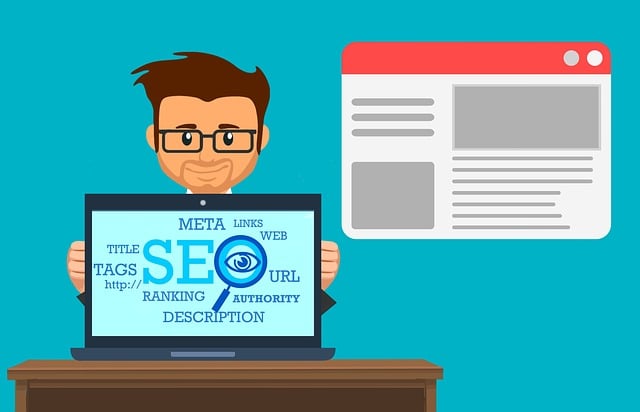Comprehensive SEO audits are essential tools for evaluating and enhancing a website's performance and online visibility. By analyzing on-page content, technical aspects, backlinks, and user experience, these audits uncover key areas for improvement. Regular audits help businesses make strategic optimizations, boosting search rankings, driving organic traffic, and strengthening their digital presence. The process involves keyword research and optimization, as well as site structure and navigation improvements. Using tools like Google Analytics, Ahrefs, and SEMrush, audits provide data-driven recommendations for technical fixes, content strategies, and mobile usability enhancements. A post-audit action plan ensures critical issues are addressed, and regular monitoring of set goals quantifies SEO success over time.
In today’s competitive digital landscape, maintaining optimal website health is paramount for online success. A Comprehensive SEO Audit serves as a crucial diagnostic tool, evaluating your site’s technical and on-page performance to enhance search visibility. This article guides you through the process of Understanding SEO Health Checks, Why Regular Audits Matter, and Key Areas to Focus. We’ll also introduce essential tools, interpret audit findings, and outline a post-audit action plan for maximizing your online strategy. Discover how these steps contribute to the overall success of your SEO efforts.
Understanding SEO Health Checks: The Basis for Online Visibility

SEO health checks are a crucial aspect of maintaining and improving online visibility for any business or website. These comprehensive SEO audits provide a detailed analysis of various elements that contribute to a site’s search engine rankings. By examining factors like on-page content, technical structure, backlinks, and user experience, these checks offer insights into the overall health of a website in the digital landscape.
A thorough SEO audit is essential for identifying areas of improvement and potential issues that may hinder a site’s performance in search results. It serves as a foundation for strategic optimization, ensuring that websites are not only discovered but also rank higher, thereby increasing organic traffic and visibility. Understanding the basics of these checks allows businesses to make informed decisions and stay ahead in their online presence game.
Why Conduct Regular Comprehensive SEO Audits?

Regular comprehensive SEO audits are essential for maintaining and improving your website’s online visibility. In today’s digital landscape, where search engine algorithms evolve rapidly, a static website can quickly fall behind competitors. Conducting these audits allows you to identify areas of improvement, from technical issues like site speed and mobile-friendliness to content optimization and backlink profiles. By addressing these factors, you enhance user experience, boost search rankings, and drive more organic traffic.
Furthermore, comprehensive SEO audits provide a strategic roadmap for growth. They help you stay aligned with best practices and industry trends, ensuring your website adapts to changes in search engine guidelines. Regular reviews also enable proactive troubleshooting, preventing potential issues from impacting your site’s performance. This continuous optimization process is key to staying ahead in the competitive digital arena.
Key Areas to Focus During an SEO Audit

When conducting a Comprehensive SEO Audit, several key areas deserve special attention. The first is keyword research and optimization. Ensuring your website targets relevant, high-volume keywords with strategic placement throughout content is vital for search engine visibility. Analyze both on-page keyword density and off-page mentions to optimize your strategy effectively.
Another critical focus is site structure and navigation. A well-organized site hierarchy aids users and search engines in understanding your content’s relationships. Assess the ease of navigation, URL structures, and internal linking strategies to ensure a logical flow that enhances both user experience and SEO performance.
Tools Essential for a Thorough SEO Analysis

Conducting a comprehensive SEO audit is an indispensable step in understanding and improving your website’s online visibility. The right tools are pivotal to ensuring this process is thorough and effective. Among the essential options available, Search Engine Optimization (SEO) specialists often rely on Google Analytics for detailed traffic insights, identifying key metrics like organic reach, bounce rates, and user engagement. Additionally, tools like Ahrefs or SEMrush provide in-depth keyword research capabilities, enabling marketers to uncover valuable search terms and analyze competitor strategies.
These platforms offer features such as backlink analysis, which helps assess the quality and quantity of external links pointing to your site—a critical factor in SEO rankings. Furthermore, they facilitate on-page audits, scrutinizing meta tags, headings, and content for optimization potential. By leveraging these tools, businesses can gain valuable insights into their website’s performance, identify areas for improvement, and implement data-driven strategies for enhanced search engine rankings.
Interpreting Audit Findings: What Does It Mean?

Comprehensive SEO audits provide a detailed snapshot of a website’s performance and health in terms of search engine optimization. When interpreting audit findings, it’s crucial to understand that each recommendation is backed by data and analysis. These insights can range from technical optimizations like fixing broken links and improving site speed, to content strategies such as targeting relevant keywords and enhancing meta tags.
Audit findings should be seen as a roadmap for improvement. Each issue identified presents an opportunity to enhance visibility, drive organic traffic, and ultimately boost conversions. By addressing these recommendations, businesses can ensure their websites are not only discovered by search engines but also provide users with a positive, seamless browsing experience.
Post-Audit Action Plan: Optimizing Your Website Strategy

After conducting a comprehensive SEO audit, the next step is crafting a strategic Post-Audit Action Plan. This plan should focus on addressing the identified areas of improvement and optimizing your website for better search engine rankings. Prioritize fixing critical issues found during the audit, such as broken links, slow page load times, or mobile usability problems. These quick wins not only enhance user experience but also signal to search engines that your site is high-quality and worthy of higher rankings.
Additionally, leverage the insights from the audit to refine your content strategy. Identify keyword gaps and opportunities for optimizing existing content. Create a content calendar aligned with relevant topics and trends in your industry. Regularly updating and expanding on valuable content demonstrates to search engines that your site is active, authoritative, and provides real value to users—all factors that contribute to long-term SEO success.
Measuring the Success of Your SEO Health Check

Measuring the success of your SEO health check involves more than just identifying issues; it’s about quantifying improvements and understanding the impact on your website’s visibility and performance. A comprehensive SEO audit isn’t just a snapshot of your current standing but a roadmap to future optimization. By setting clear goals before conducting the audit, you can track progress against specific metrics that matter most for your business objectives.
These could include increased organic traffic, improved search engine rankings for targeted keywords, higher bounce rates reduced, or improved conversion rates. After implementing recommended changes based on your SEO health check, regularly monitor these metrics to assess the effectiveness of your optimization efforts. This data-driven approach ensures that your SEO strategy remains dynamic and aligned with your business goals, driving sustainable growth and visibility online.
